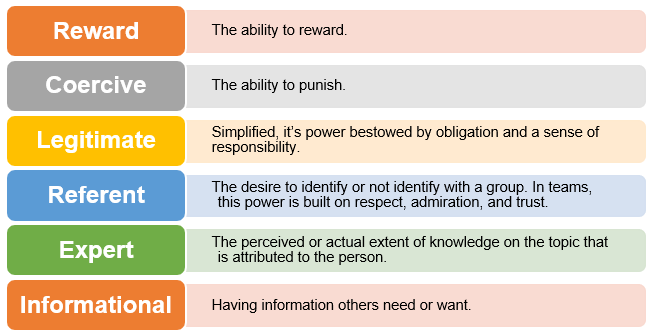An important aspect of Project Management that you shouldn’t overlook is understanding the formal and informal uses of social power within a team. In this article, social power is the ability to influence decisions in a professional setting. By understanding the different types of social power and how they can be utilized will help you manage projects more effectively by considering the role each person plays on a team.
Power and influence are heavily studied and are the subject of reams of scholarly articles. For our purpose, consider the French and Raven Power Taxonomy as a primer to get you thinking about the formal and informal uses of social power within an organization or team. Social Psychologists John R. P. French and Bertram Raven, in 1959, published their research on the Bases of Social Power. Initially, this research described 5 bases of power: Reward, Coercive, Legitimate, Referent, and Expert. Additional research was conducted, and in 1965, they added a sixth power base: Informational.
Six Bases of Social Power and Influence Defined

After reading the definitions, consider each person on your team and a few degrees outside of it, and determine the types of influence each person has historically exerted. Now look past the formal and consider the informal: Do other team members routinely seek one person’s opinion on a topic even though that person has no formal reason to weigh in? That person has either referent power because they belong to a group whose opinion is valued, or they could be viewed as an expert.
Being aware of the power and influence structure of your team will allow you to not only avoid making inadvertent missteps but execute projects more effectively.

